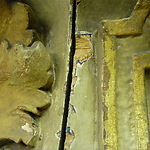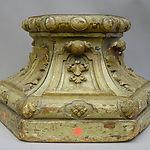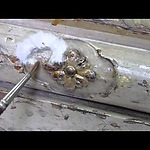Afgelopen zomer heeft Anna Pokorska stage gelopen op de restauratie-afdeling van het Amsterdam Museum. Anna is afkomstig van de London Metropolitan University. Haar blog is daarom in het Engels. Tijdens de behandeling van een houten standaard in de restauratiestudio van het museum deed zij een aantal bijzondere ontdekkingen.
restauratie van een 18e-eeuwse barokstandaard
Deel 1
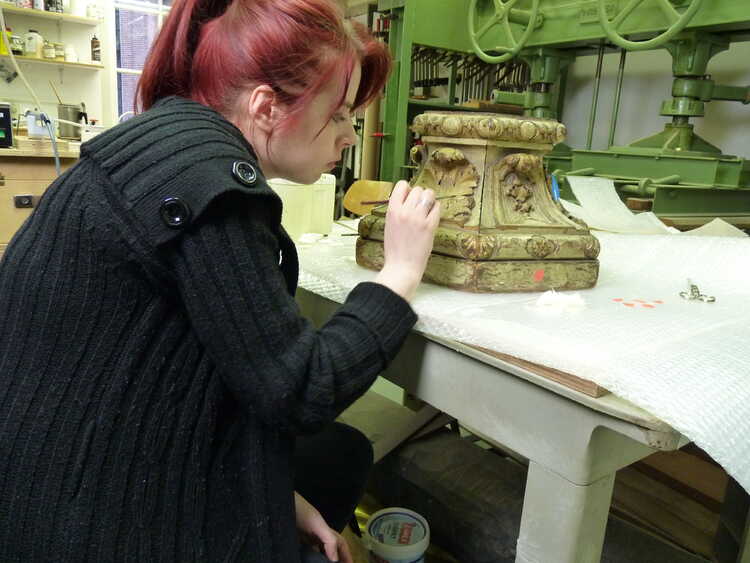
The carved wooden stand was selected to go on loan to the Bijbels Museum Amsterdam, to furnish a room with portraits of the Backer Family.
The painted stand is designed to support a large object like a vase and would typically be directly on floor-level. Because of this the white paint and parcel gilt surface was heavily soiled and some of the more exposed carved details had been damaged.
figure 1: Stand before conservation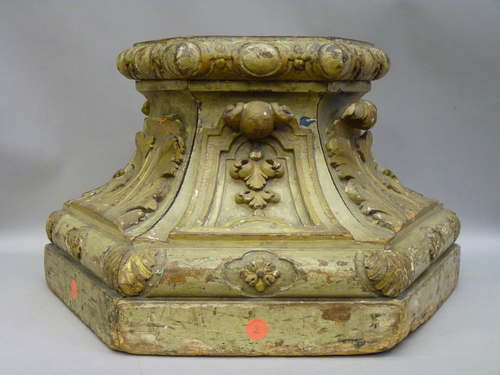
Figure 1. – stand before conservation
Before attempting to clean the surface it was essential that any loose paint was stabilised first. The thick paint layers – as it turned out the stand had been over painted more than once – had lifted in some places or had worn through in others.
A tried and tested method for gluing in such situations is gelatin glue made of fish bladder, which is applied on damaged areas. The paint flakes are then pressed down with a hot spatula which makes the paint more pliable and causes the glue to set.
Figure/Film 2. – gluing down the paint
During the consolidation it soon became apparent under the current off-white paint and gold colour scheme other colours were present.
figure 3: Damaged area with earlier paint showing
Figure 3. – damaged area with earlier paint showing
To find out more about these earlier colour schemes, a number of minute paint samples were taken from different areas of the stand.
484 keer bekeken

